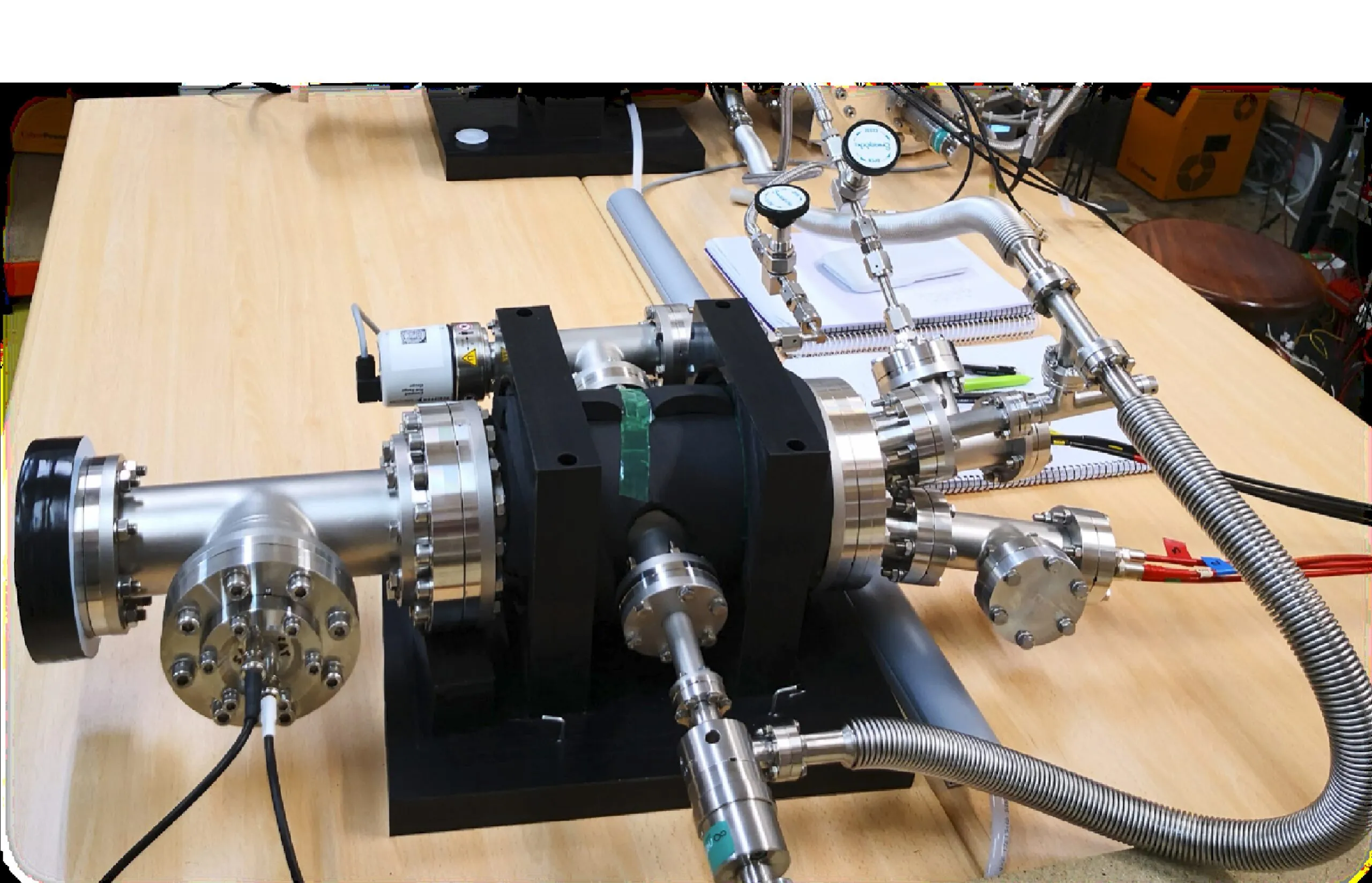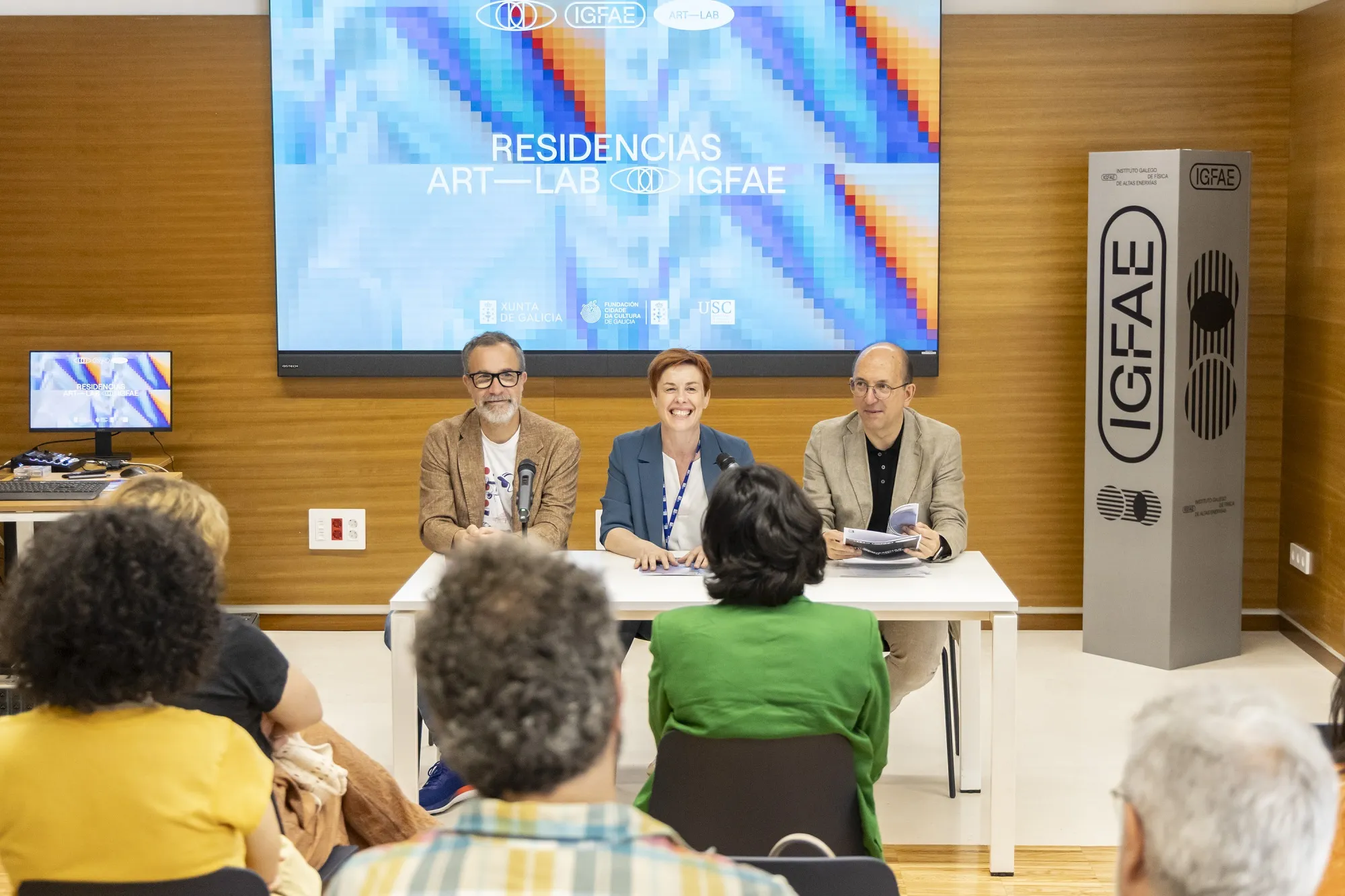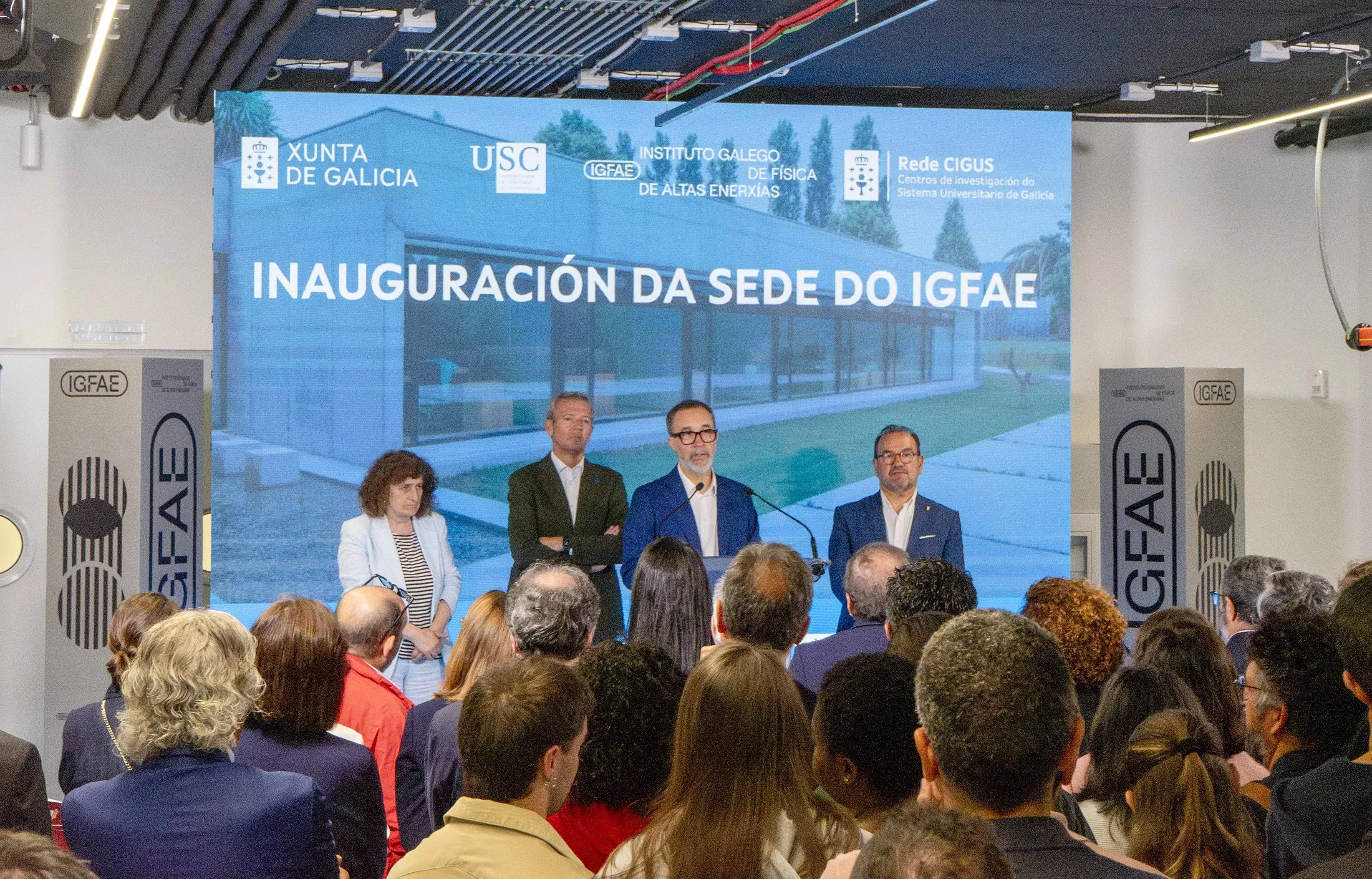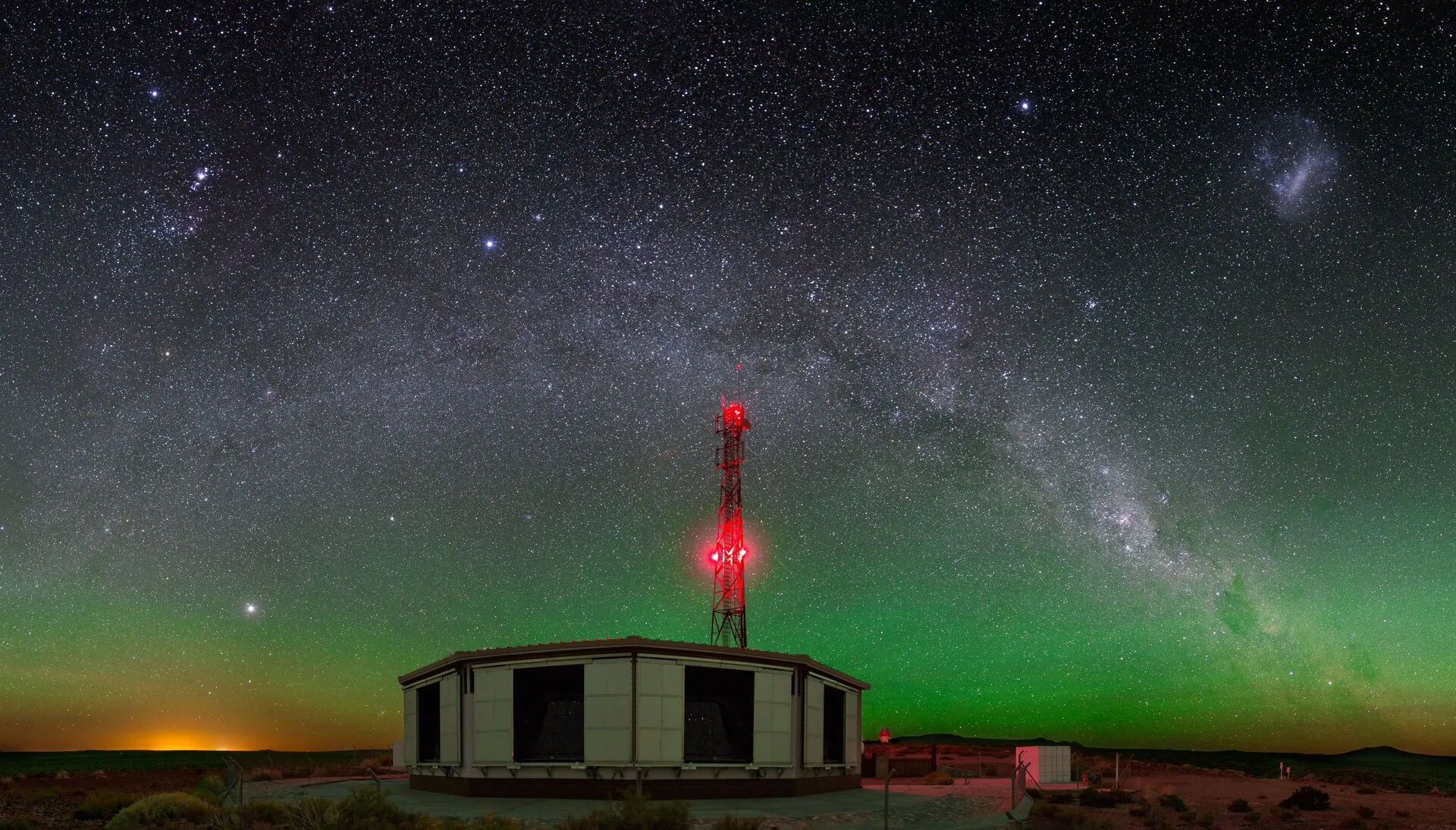Un equipo do Instituto Galego de Física de Altas Enerxías (IGFAE) traballa no desenvolvemento dunha nova técnica de detección para o experimento DUNE, o máis sofisticado do mundo no estudo dos neutrinos, situado entre o acelerador de partículas PIP-II, en Fermilab, e o laboratorio subterráneo de Sanford (EE. UU.). Entre os obxectivos científicos de DUNE atópase a observación, cunha precisión sen precedentes, de como os neutrinos cambian de identidade ou ‘sabor’ mentres se desprazan, o que podería axudar a explicar a asimetría observada entre a materia e antimateria no noso universo.
Os neutrinos son fantasmas extremadamente veloces do mundo subatómico. Como a súa masa é tan pequena e non teñen carga eléctrica ‒de aí o de neutrino‒ apenas interaccionan con outras partículas. De feito, son tan lixeiros e debilmente interactuantes que o mundo en que vivimos resúltalles altamente transparente. Hainos de 3 tipos ‒electrónicos, muónicos e tauónicos‒ e mentres viaxan polo espazo van mutando de identidade (‘sabor’, na xerga do campo) segundo a diferenza de masa entre eles. Determinar as propiedades dos neutrinos de forma directa é ademais moi difícil, pero existen métodos indirectos para coñecer a súa natureza e comportamento escorregadizo que poden ser claves para responder a unha das grandes cuestións actuais da física: por que hai máis materia que antimateria no universo?
Para contribuír a este obxectivo nace ND-GAr, un detector de neutrinos en cuxo deseño está a participar un equipo do IGFAE liderado polo investigador Diego González-Díaz. ND-GAr instalarase nos próximos anos nun dos maiores experimentos de neutrinos xamais construído, DUNE (Deep Underground Neutrino Experiment) do Laboratorio Nacional Fermi, próximo a Chicago. O acelerador PIP-II de Fermilab disparará protóns acelerados a case a velocidade da luz contra un branco, creando o chorro de neutrinos máis potente do mundo ata a data. Preto da fonte de neutrinos situarase o detector próximo (‘Near Detector’), onde se instalará o ND-GAr, e a 1.300 quilómetros de distancia recibiraos outro detector, o detector afastado (‘Far Detector’). Durante esa viaxe a máis dun quilómetro baixo terra, os neutrinos cambian as súas propiedades e o obxectivo de ND-GAr é contribuír á determinación, coa maior precisión ata a data, de cantos neutrinos convértense en antineutrinos durante a viaxe, e viceversa. A comunidade científica cre que, se conseguimos caracterizar suficientemente ben estas minúsculas oscilacións de neutrinos, poderemos resolver o misterio polo que cal a materia goberna sobre a antimateria no noso universo.
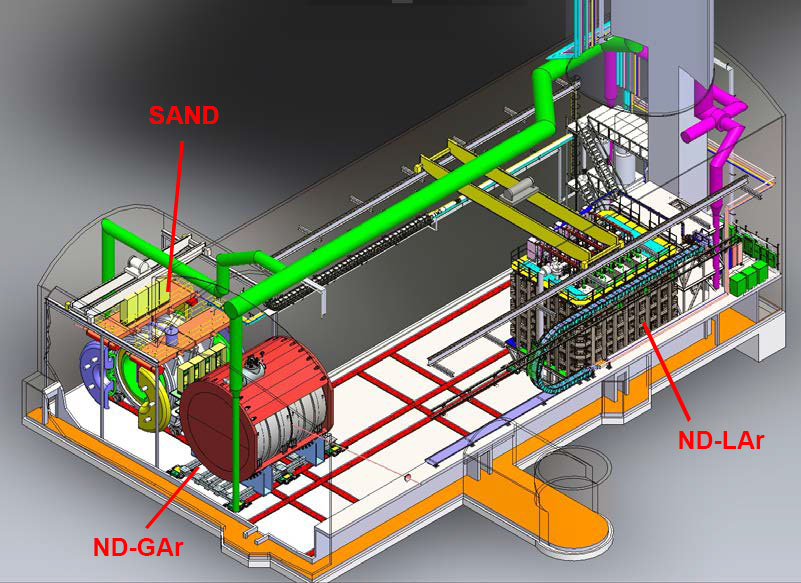
Esquema do Near Detector (Detector Cercano) que se instalará en DUNE e os seus distintos subcompoñentes. En vermello, a cámara TPC que está a ser deseñada por un equipo do IGFAE. Crédito: colaboración DUNE.
A clave podería estar no diferente comportamento de neutrinos e antineutrinos fronte ao fenómeno de oscilación que, no baleiro, caracterízase a través do denominado “ángulo (fase) de violación carga-paridade (CP) no sector leptónico”. Unha vez confirmado e, especialmente, cuantificado, este diferente comportamento entre neutrinos e antineutrinos, resulta posible establecer relacións teóricas entre fenómenos análogos para outras partículas/antipartículas fundamentais do Modelo Estándar de física de partículas. En particular, as súas interaccións e, en última instancia, a maneira na que a materia e antimateria creouse e destruíu durante a orixe do universo, facendo prevalecer de maneira asimétrica unha das dúas.
Tras a pegada dos neutrinos con cámaras TPC
ND-GAr é unha cámara de proxección temporal (TPC), un tipo de detector que combina campos eléctricos e magnéticos con gases ricos en argón no caso de DUNE, permitindo así reconstruír en 3D a traxectoria das partículas producidas nas interaccións dos neutrinos. O equipo do IGFAE está a deseñar un método para ler a escintilación ou brillo inicial que se produce cando o feixe de neutrinos interacciona co gas do detector. Isto permitirá suprimir eventos que non estean asociados co feixe de neutrinos, así como mellorar a reconstrución das partículas cargadas emerxentes. En concreto, mellorará a estimación da enerxía e o ángulo de dispersión dos neutróns e raios-gamma que se producen en interaccións de ‘corrente neutra’, un tipo de interacción do neutrino que presenta unhas características de reconstrución especialmente complicadas e que por iso está moito menos estudada ata a data.
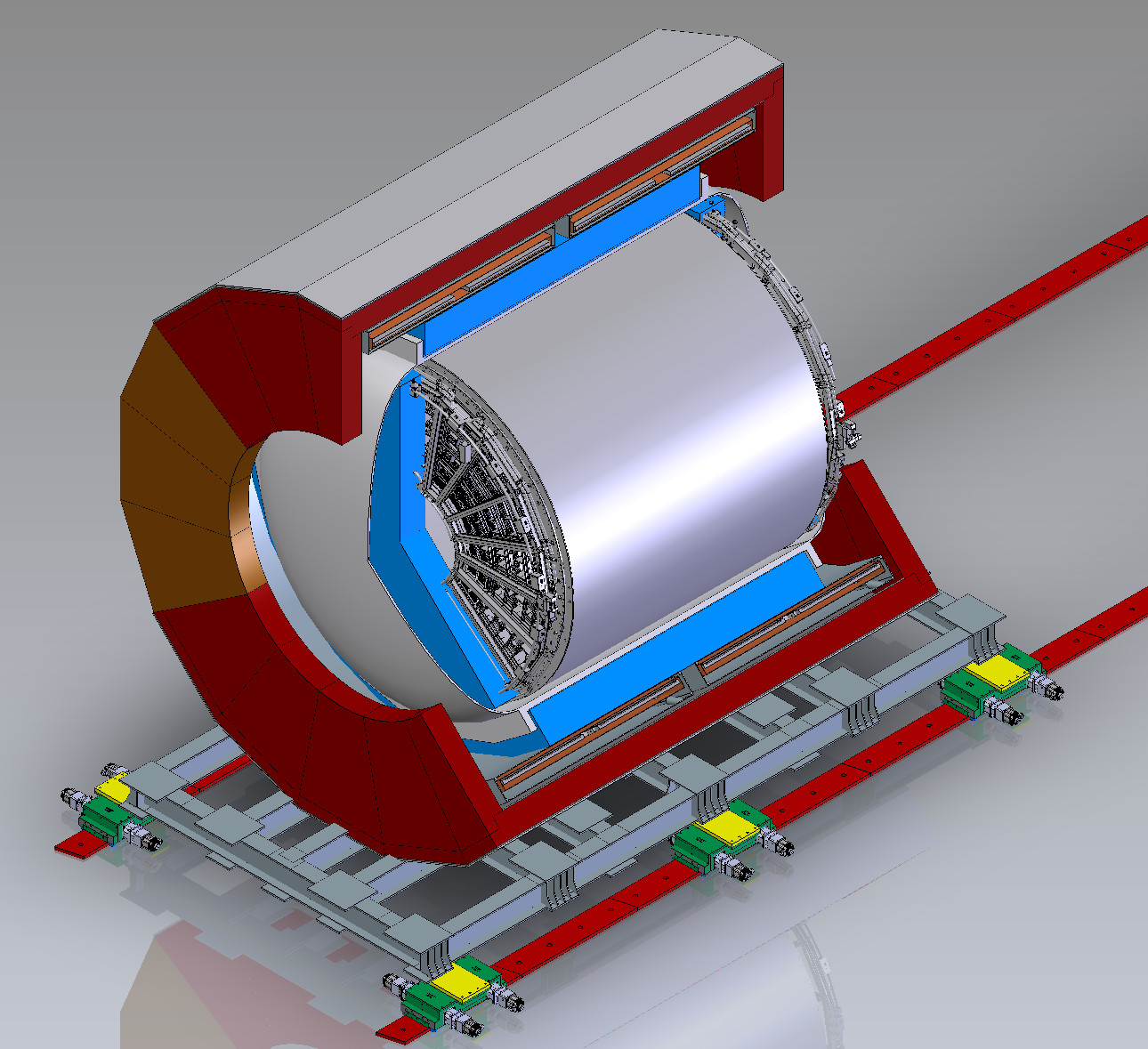
Esquema do ND-GAr, mostrando a cámara TPC (HPgTPC), rodeada do calorímetro electromagnético (ECAL). Crédito: colaboración DUNE.
“Un aspecto particularmente interesante deste proxecto é que agora estamos a empezar a comprender o potencial do detector para reconstruír partículas producidas en conxunción co feixe de neutrinos e preditas en diferentes extensións do Modelo Estándar”, sinala Diego González-Díaz, coordinador do proxecto. “Para conseguilo é esencial poder obter o tempo da interacción, e a detección en fase gasosa representa significativas melloras en comparación con outras técnicas existentes”.
“Aínda necesitamos comprender mellor os aspectos técnicos, pero a demostración experimental da existencia dunha mestura de gas fortemente centeladora a 10 atmosferas de presión, xunto coa estabilidade operacional dun mini ND-GAr construído no IGFAE, marcou un antes e un despois. O traballo persistente de Pablo Amedo e Sara Leardini, estudantes de doutoramento do IGFAE, xunto con apoio técnico de David José Fernández e David González Caamaño (técnico de IGFAE) nos últimos meses foi incrible”.
Na actualidade, está a avaliarse a resposta completa da TPC para determinar de forma máis cuantitativa o impacto do sinal lumínica producida polos neutrinos ao interaccionar co gas nas diferentes canles de física. Este traballo realízase con simulacións por computador, utilizando o software Geant4 e os datos das medidas experimentais que lidera a investigadora postdoutoral do IGFAE Ángela Saa. “Este traballo tamén permitirá establecer como optimizar a lectura óptica, en particular, que sensores usar e como configuralos. O noso obxectivo é, cara a final de ano, implementar no IGFAE a tecnoloxía seleccionada para a detección de luz nun mini- ND-GAr xa de tamaño medio (20 litros). Estamos aínda moi lonxe de entender de maneira completa as novas posibilidades que se nos están abrindo, pero o horizonte científico-tecnolóxico é fascinante”, apunta Diego Gónzalez-Díaz.
Proxecto internacional con participación española
DUNE é un consorcio internacional formado por máis de 1000 científicos, 200 institucións e 30 países, onde o IGFAE participa con este proxecto no que traballan na actualidade Ángela Saa, Pablo Amedo, Sara Leardini, Miguel Morales, David José Fernández, Alberto Sánchez e David González. Ademais de numerosos colaboradores internacionais, en España conta co apoio de investigadores do Instituto de Física Corpuscular (IFIC), do Centro de Investigacións Enerxéticas, Ambientais e Tecnolóxicas (CIEMAT) e Universidade de Granada.
Este proxecto está financiado polo programa IGNITE* do IGFAE e o programa H2020 a través do proxecto AIDAinnova para o desenvolvemento e transferencia de novas tecnoloxías de detectores de partículas en Europa durante os próximos 4 anos e, en concreto, para a optimización de TPCs presurizadas de nova xeración con lectura óptica.
Referencias:
Preprint: “Deep Underground Neutrino Experiment (DUNE) Near Detector Conceptual Design Report”. DUNE Collaboration. arXiv:2103.13910v1
Imaxe principal: Mini ND-GAr, prototipo construido no IGFAE do detector ND-GAr que se instalará en DUNE. Crédito: IGFAE.



